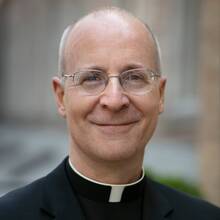"Understanding U.S. Catholic Sisters Today," a comprehensive new study of Catholic sisters sponsored by FADICA (an umbrella organization for Catholic foundations) has been released on the WeAreSisters.net website today. Here is a snapshot of some of the surprising facts found in the report, some of which challenge the existing narratives and widely held stereotypes on U.S. Catholic sisters.
Only between 5 and 8 percent of sisters across generations cited their congregation’s “progressive” or “traditional” reputation as a factor in their decision to enter.
The new report finds that an institute’s reputation as “progressive” or “traditional” may be more important to outsiders than it is to entrants. For example, only between 5 and 8 percent of sisters across generations cited their congregation’s “progressive” or “traditional” reputation as a factor in their decision to enter. Attempts to group sisters into artificial and divisive categories distracts from what should be a unified effort.
More than 250,000 Catholic millennial women have considered a vocation to consecrated life.
While there is a great deal of concern about the future of individual communities and ministries, the majority of Catholic sisters remain optimistic about religious life. More than 250,000 Catholic never-married millennial women have considered a vocation to consecrated life at least somewhat seriously. The number of Catholic sisters today—nearly 50,000—is almost the same as it was in 1900, before the atypical boom in the middle of the century. Ten percent of never-married Catholic millennial women have considered a vocation to consecrated life.
Joy is most commonly identified as the most attractive trait among new members to religious life
"Wherever consecrated people are, there is always joy!” Joy, according to recent studies, is the single most important factor attracting new members to religious life. This affirms what Pope Francis said in his recent Apostolic Letter on Consecrated Life. The consecrated life, he pointed out, will flourish not because of “brilliant vocation programs” but because young men and women will “see us as men and women who are happy!”
Communities of sisters are seeing increased collaboration across congregations as well as with the lay faithful.
Collaboration across congregations is a hallmark of religious life. This is rooted not only in necessity but in solidarity. Sisters have also increased collaboration with the laity in their ministries.
The full report can be downloaded here.








